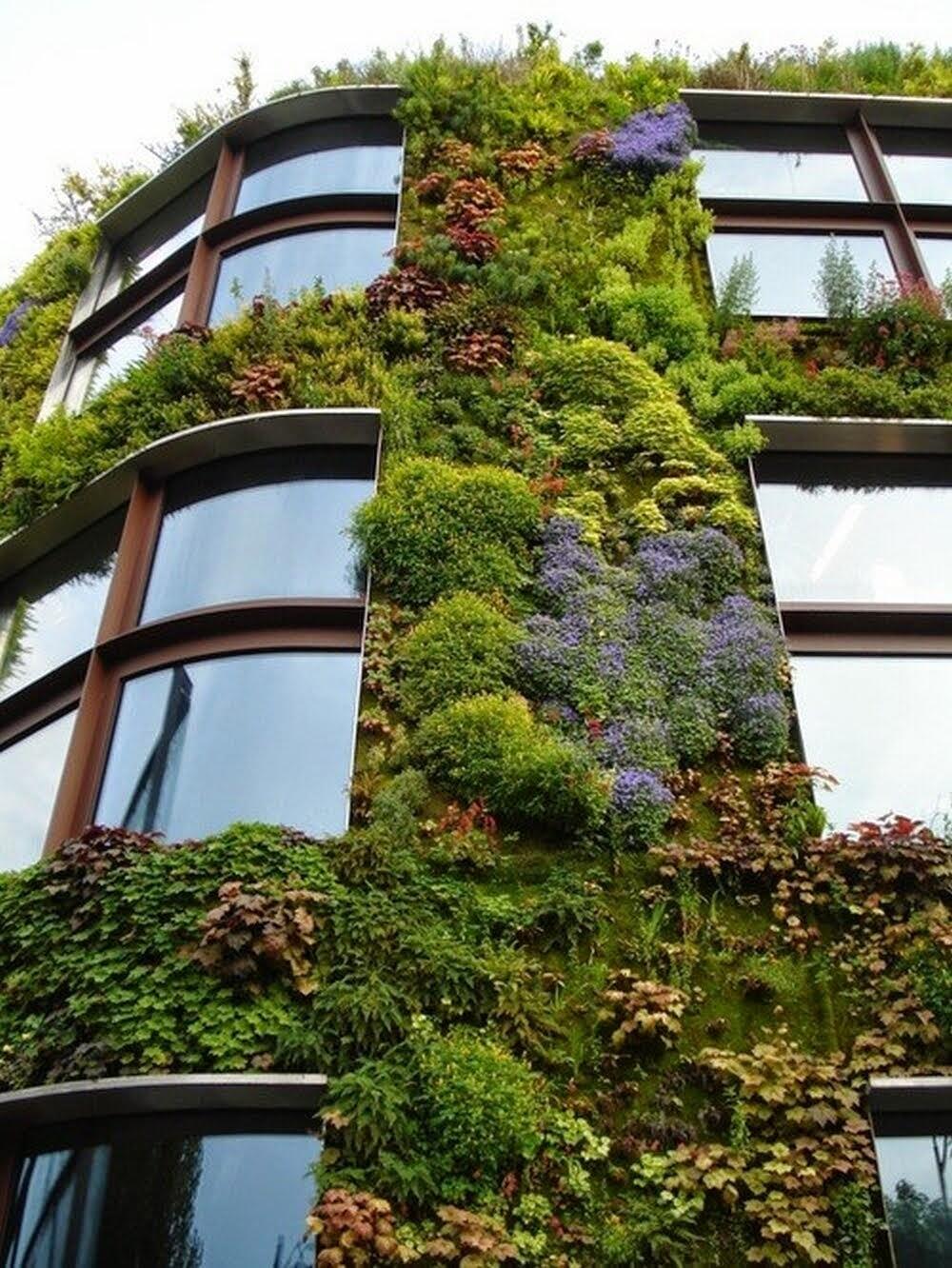#4387. Biophilic Facade: Vertical Gardening on a Curved Glass Structure
This expressive facade represents an excellent example of "living architecture" — vertical landscaping integrated into a modern building. What we see is a fragment of a facade with a curved glass wall, where each floor is framed by a vertical garden. The curved lines of dark metal window frames create a rhythmic contrast with the organic arrangement of vegetation.
The biodiversity of the facade's greenery is particularly impressive — various shades of green are combined here: from light lime to dark emerald, while patches of purple flowers add striking accents. Plants of different textures and shapes — from small-leaved ground covers to voluminous shrubs — create a multi-layered plant composition that changes from floor to floor.
The facade demonstrates a successful solution to the balance between the functionality of a modern building and an ecological approach. Vertical landscaping not only visually softens architectural forms but also serves as a natural air filter, thermal insulation, and habitat for urban fauna. This approach to design reflects contemporary trends in sustainable architecture, where the building becomes part of the ecosystem.
